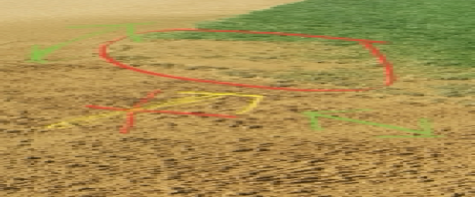RAKING AND DRAGGING OF FIELDS:
The raking and dragging of our fields are very important to the upkeep of our fields. Raking and dragging the fields will accomplish two things, (1) removal of divots from cleats and (2) fill in the low spots, which are usually in the sliding area in front of the bases and at the batter's box (BE SURE TO RAKE THE DIRT IN THOSE AREAS).
HOW TO RAKE:
1. Ranking should be done down the baselines. Raking should NEVER BE DONE SIDE TO SIDE.
- (Raking side to side will create lips on the base paths and create issues that will result in water retention on the field. We do not want this).
2. Fill in the mound. YES, the kids will dig it out again, but if it rains the low spot will fill up with water.
GETTING THE FIELD READY AFTER RAIN:
1. After the water has cleared out, it takes about 2 HOURS for the field to dry.
2. All of the standing water must be REMOVED. The easiest way to remove the water, but is a big mistake, is that most people will PUSH the water into the grass (DO NO ATTEMPT TO DO THIS). When you push with a broom or roller, you are pushing the dirt into the grass. By doing this you will add a BUMP that is created by other of buildup on the grass area. This will create bad hops and unplayable infields.
3. Once the standing water has been removed, you need to rake the dirt to mix saturated and not saturated dirt. This will also turn the dirt exposing the wet to air and sun. Be sure to rake in the direction ALONG the grass line, NOT INTO THE GRASS.
4. You can also add the SURFACE product, which is a dry mix. This product is better than the old "DIAMOND DRY", where it's not going to leave a hard, compact film on the infield if you use too much. The surface product should be applied by hand tossing it onto the wet infield areas and then rake it into the dirt. You will need to let the product work for 15-20 minutes, before you can add more. There will be multiple areas, so you can move to another spot and come back to the previous spot to follow up (YOU CAN REPEAT THIS AS NEEDED).
- The Surface product is costly, please don't dump piles of it on the fields just to get a single game in on a Thursday night.
5. There are Shop Vac's, buckets, and shovels in the garage area. Also in the garage area is a pad that you can lay right on the puddle and SUCK off the water leaving the dirt (This will need a cordless drill).
